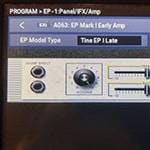■ Previous GM Sound Source Series
GM Sound Source 01: Ancient GM Sound Sources
GM Sound Source 02: Piano Category
GM Sound Source 03: Chromatic Percussion Category
GM Sound Source 04: Organ Category
GM Sound Source 05: Guitar Category
GM Sound Source 06: Bass Category
GM Sound Source 07: Orchestra Category
GM Sound Source 08: Ensemble Category
GM Sound Source 09: Brass Category
GM Sound Source 10: Reed Category
GM Sound Source 11: Pipe Category
GM Sound Source 12: Synth Lead Category
GM Sound Source 13: Synth Pad Category
GM Sound Source 14: Synth SFX Category
GM Sound Source 15: Ethnic Category
This category mainly consists of percussion instruments, though there are some instruments with defined pitches as well. While GM sound modules can cover a wide range of pitches, the actual range of these instruments is often limited or sporadic. By understanding the playable pitch range of each instrument, you can recreate their sound more authentically.
113 000 Tinkle Bell - Pitch Range: C4-C6
This instrument is often referred to as a handbell. Each bell produces a single pitch, and there is a lineup covering roughly two octaves. The basic performance style involves several players swapping bells during a performance. It has a long history, originating in 17th-century churches, and was originally used as a practice instrument for playing the carillon (the church bell system).

114 000 Agogo Bells - Pitch Range: C4-C5
These are agogo bells, essential in Latin music. They typically come as a set of two (one large and one small) or sometimes as a trio. The pitch definition is somewhat vague, but many sets feature pitches a fourth apart—commonly C5 and F5. When programming them, using just the two pitches that are a fourth apart tends to sound more authentic. In the case of TTS, where every key on the keyboard is assigned a sound and melodies can be played, I experimented with a mechanical performance that wouldn’t be possible in real life.

115 000 Steel Drums - Pitch Range: C4-E6 (Tenor)
Also known as steel pans, these instruments have the shape shown in the photograph. By striking specific concave areas on the interior with a mallet, a particular pitch is produced. They are known for their distinctive tone with a metallic resonance that really catches the ear. This instrument was developed around the 1940s in the Caribbean region. It’s a percussion instrument made from a repurposed drum barrel, with a musical scale covering about two octaves in the case of the tenor pan. There are also several other types available, including steel pans that produce lower pitches.
The construction of this instrument is fascinating; rather than being designed based on theoretical principles, it appears that someone accidentally discovered that striking the concave areas of a drum barrel produced specific pitches, and that discovery was further developed. Such a physical phenomenon only occurs with thin sheet metal, making it a truly modern instrument. However, due to metal’s significant expansion and contraction with temperature, tuning can be affected. The pitch is determined by the size of the concavity, and the notes are arranged in a circular pattern reminiscent of the circle of fifths. Notably, Disney’s “Under the Sea” is one of the famous songs featuring this instrument.
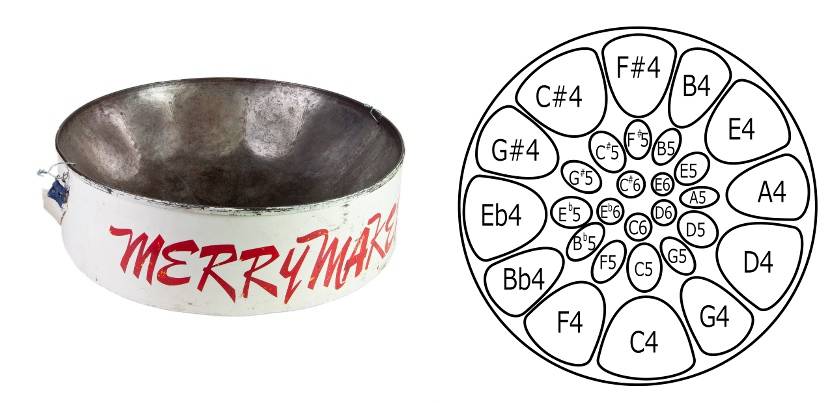
Steel pan, CC BY-SA 3.0 (quoted from Wikipedia)
116 Wood
116 000 Wood Block
Wood blocks in this category have almost no inherent pitch; most come as a set of two, as shown in the photograph. The most accurately pitched sounds are represented by the following two notes, which are also the wood block sounds found in a drum set:
| F#4 | E5 |
| Low Wood Block (of a drum set) | High Wood Block (of a drum set) |

116 001 Castanet
In Japan, you often see castanets used for educational purposes as shown in the photo, but they are originally traditional Spanish instruments. In flamenco, the dancer often also plays them. Although they don’t have a defined pitch, the educational versions tend to sound roughly like C3.

Taiko Drum
117 000 Taiko Drum
Japanese taiko drums have a different tonal character compared to Western drums. Their shapes are distinctly different as well, being barrel-shaped. While many Western drums are portable and used in marches, Japanese taiko drums—perhaps because they were traditionally used in ceremonies—are often stationary, large, and heavy. They produce a resonant, weighty sound that matches their appearance.
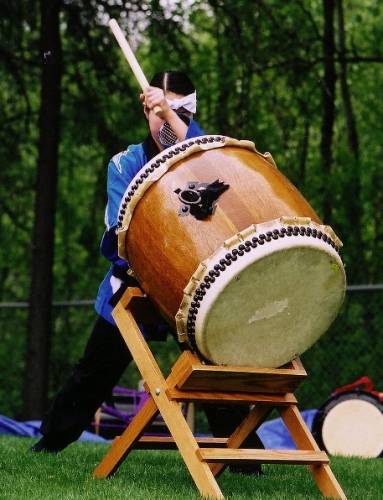
Taiko drum, CC BY 2.0 (quoted from Wikipedia)
117 001 Concert BD
This is an orchestral bass drum, known as the Gran Cassa. Because the desired sound differs from that of a bass drum in a drum set, it is larger and its resonance is markedly different—producing a thunderous tone. Although Concert BD models are also included in orchestral sets, they are fixed so that only one note can be used. In practice, bass drums come in sizes such as 24, 28, 32, and 36 inches, each with its own pitch characteristics. The table below maps each size to a corresponding keyboard note, arranged exactly one octave apart. Furthermore, because tuning alters the pitch, assigning keys enables fine pitch adjustments.
| C2 | C3 | C4 | C5 |
| 36inches | 32inches | 28inches (identical to Drum Set OrchestraSetConcertBD1) | 24inches |
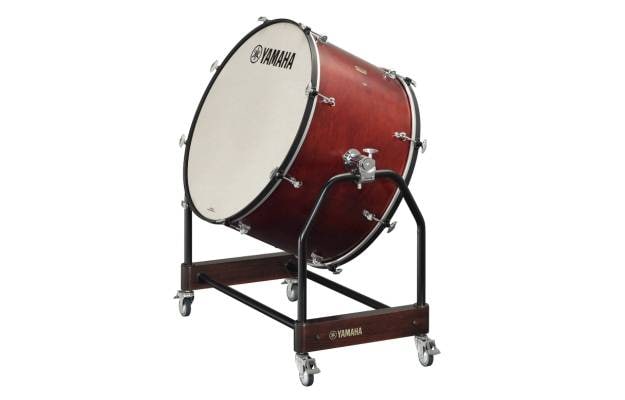
118 Tom
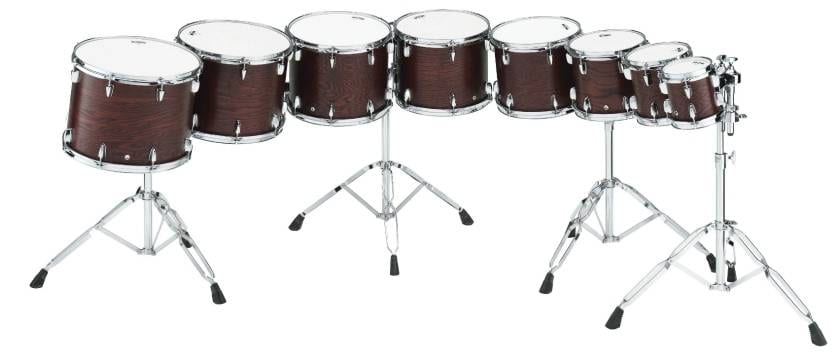
118 000 Melodic Tom 1
Also known as tom-tom, these are incorporated into drum sets. They come in many sizes, and by combining them, you can create flowing phrases. In the photo, the toms are arranged from largest to smallest in the following order: 16, 15, 14, 13, 12, 10, 8, and 6 inches. Because toms have relatively defined pitches, they require tuning adjustments; however, the adjustment range is broad, and the pitch isn’t determined solely by their size. Additionally, with TTS, the pitch drops by several notes after being struck, though it decays in a relatively calm manner. The table below shows the settled peak pitches when playing the TTS keyboard. It might seem convenient if the keyboard and the pitches matched, but they differ considerably—a two-octave difference on the keyboard corresponds to a one-octave difference in sound.
| C2 | G2 | C3 | G3 | C4 | G4 | C5 | G5 | C6 |
| C1 | E1 | F#1 | Bb1 | C2 | E2 | F#2 | Bb2 | C3 |
118 001 Melo Tom 2
This is a timbre variation; however, its peak is difficult to capture, and the sense of pitch is rather diminished.
119 Synthesizer Drum
119 000 Synthesizer Drum
This synthesizer drum is characterized by a dramatic drop in pitch immediately after sound production. Acoustic toms, when tuned with the rear higher than the front, exhibit a similar tendency; however, this instrument exaggerates the effect with synthesis to create an impressive sound. It was widely used in the early 1980s for its fresh appeal, but perhaps because it was overly distinctive, it eventually fell out of favor and is now rarely heard. The original sound was produced using Simmons electric drums with analog synthesizers. Above all, the hexagonal pads made a striking impression.
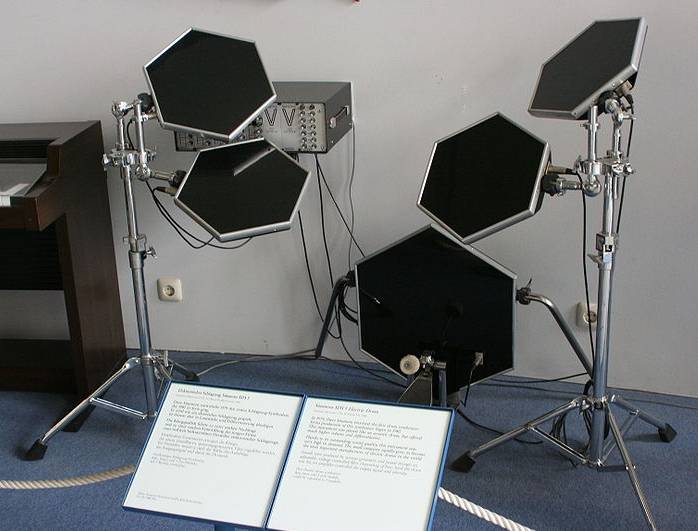
Simmons SDS5 Electric Drum, CC BY-SA 2.5 (quoted from Wikipedia)
119 001 808 Tom
This is the tom sound used in the Roland TR-808, which was released in 1980. The TR-808 repurposed analog synthesizer technology for a drum machine, making it technically similar to Simmons. However, the 808’s tom maintains a fixed pitch and does not drop. It may not have a particularly strong character, but its lack of quirks can make it convenient for certain applications.
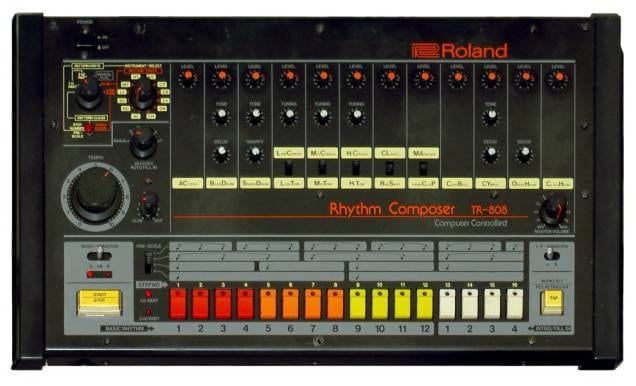
Roland TR-808, CC BY-SA 2.0 (quoted from Wikipedia)
119 002 Elec Perc
While there are electronic drums within drum sets, this sound takes a different direction. It is unmistakably a snare, yet it possesses a low, powerful tone. Although it is mapped across the entire keyboard, rather than employing a melodic approach like the toms, it might be better to simply use the snare sound at the preferred pitch.
120 000 Reverse Cymbal
This sound is created by reversing the sound of a normally struck cymbal. It carries a nuance similar to a cymbal roll technique, where a real cymbal is struck in quick, successive hits to gradually build up the sound. Reverse tape playback is an engineering technique that has been used since the 1960s and became famous after being featured on a Beatles album. The audio processing results in a slightly unnatural quality, which in turn creates a fresh impression. Perhaps because its character is not overly pronounced, the reversed cymbal has even become somewhat of a standard.
In the video, notes A2, A3, A4, and A5 are played sequentially, and you can notice that not only the pitch but also the duration of the sound varies. This phenomenon occurs because the same sample is played back at different speeds. When played at double speed, the pitch increases by one octave while the playback time is halved.

The column “sound & person” is made possible by your contributions.
For more information about submissions, click here.






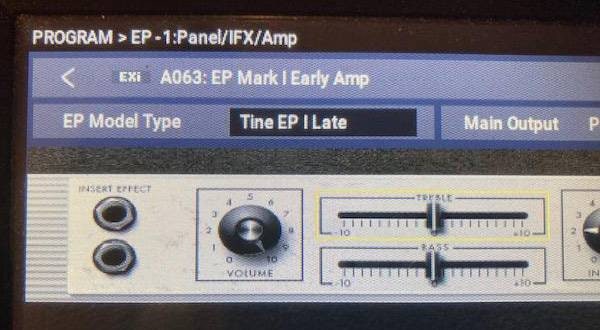





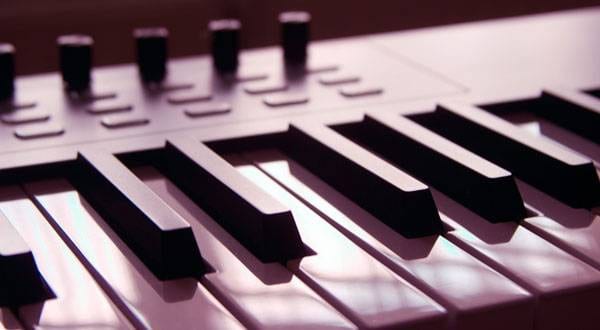


![[2023] Recommended Items for Music Programming - DAW/Software Instruments/Plug-ins](/contents/uploads/thumbs/2/2020/11/20201102_2_11495_1.jpg)
![[DJ Music Selection Techniques] 3 Recommended Music Source Websites for DJs [Comparison]](/contents/uploads/thumbs/2/2018/8/20180803_2_3857_1.jpg)
 DTMセール情報まとめ
DTMセール情報まとめ
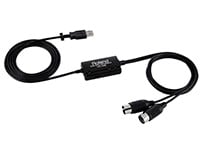 USB接続MIDIインターフェイス
USB接続MIDIインターフェイス
 ドラム音源に最適なMIDIパッド・コントローラー
ドラム音源に最適なMIDIパッド・コントローラー
 USB接続対応のMIDIキーボード
USB接続対応のMIDIキーボード
 DTMに必要な機材
DTMに必要な機材
 DTM・DAW購入ガイド
DTM・DAW購入ガイド
